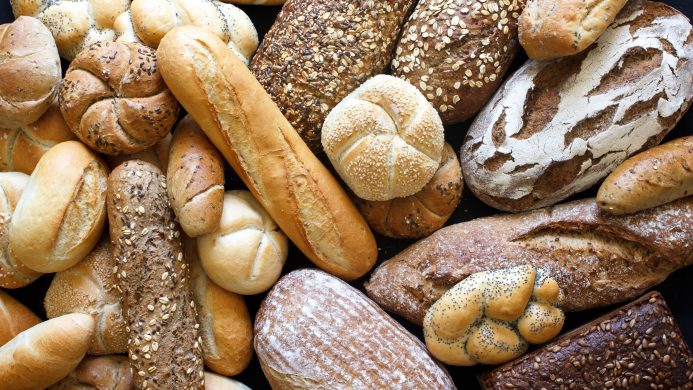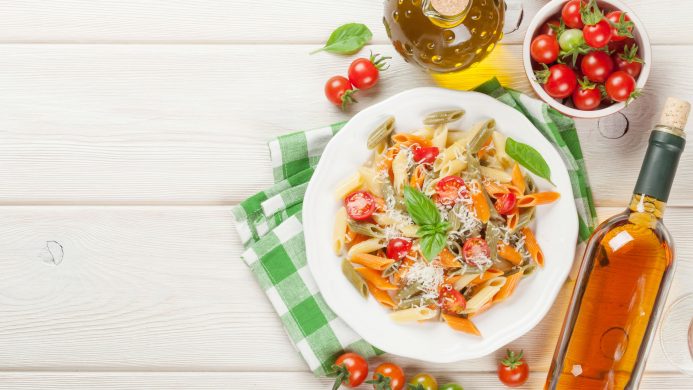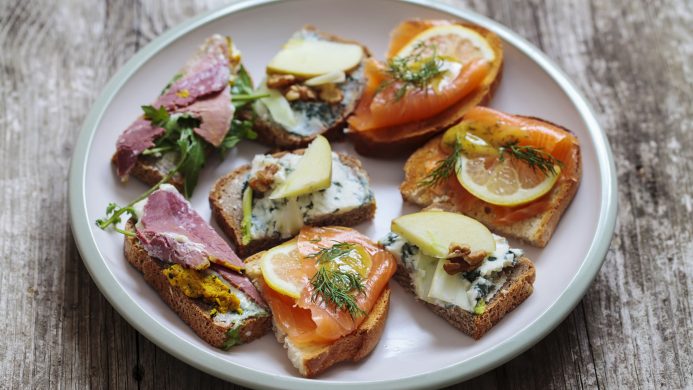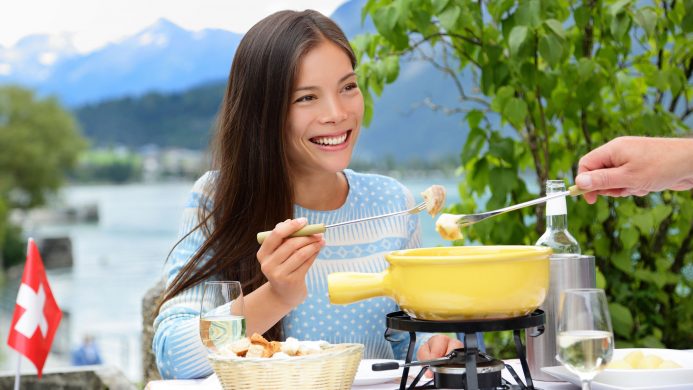The most famous foods in Europe are characterized by being closely related to the folklore and climate of the country to which they belong. European kitchens have been supplied with local products for centuries, a trend that is changing due to globalization and changes in the lifestyle of today's society.
Below you have an index with all the points that we are going to deal with in this article.
Article Index
- 1.
- 1.1.
- 1.2.
- 2.
- 3.
- 4.
Indigenous foods of Europe
There are many foods that have gained international fame, although there are many ingredients and recipes that can be considered original in the sense that, over the years, they have become the representative foods of Europe par excellence. Among them, we highlight:
- Acorn-fed Iberian ham
- Foie gras
- Arancini
- Portuguese sardines
- musaka Greek
- Fondue
- Belgian waffles
- German sauerkraut
- Paella
- Quiche Lorraine
Many of the best known cuisines come from Spain, Italy and France, as we have seen with the dishes mentioned in the previous list, where the Iberian ham comes from Spain, while the foie gras and arancini They are originally from France and Italy, respectively.
What customs do Europeans have when eating?
At present, the gastronomy of Europe and the customs when eating vary greatly depending on the climate, the region and the immigrant communities that are in that place, since this leads to exotic foods with ingredients from Asia and America.
Different cooking recipes depend a lot on the meal schedule, since in each country they dedicate a certain time of day and time to cooking, so in some places dinners and midday meals are more elaborate than in others.
Thus, while in Spain it is usual to have breakfast between 08:00 and 09:00, eat at 14: 00-15: 00 and have dinner at 21: 00-22: 00, in other European countries you eat at mid-morning and dinner in the period from 18:00 p.m. to 20:00 p.m. approximately.
Traditional food and ingredients
The meals of the medieval Europe and the culinary practices of that time were quite different from what we know today. Back then, the use of the fork was associated with the bourgeoisie and the upper classes of Italy. Its use did not extend to all social classes until the XNUMXth century.
The traditional ingredients of ancient foods were, among others:
- Wine
- Vinegar
- Agraz or verjus
- Sugar
- Pork or chicken
- Cod Fish
- Herring
- Almond milk
- Spices and herbs
Bread was the daily food, so the baker's trade it was highly regarded in society and of great importance to the entire community. The most commonly used cereals were rye, barley, oats, and millet. For its part, rice, although it is considered an indigenous product of Europe, was too expensive at that time.
The foods that came to America from this continent were, among others, rice, sugar cane, bananas, coffee, oranges, and beef and pork. Some examples of foods that mix products from America and Europe are empanadas, asado and pasta.
The European cuisine that we know today began to take shape in the so-called modern age, that is, between the XNUMXth and XNUMXth centuries. In this period the custom of adding sauces to dishes was born. They also began to consume potatoes, so typical today, which reached European territory thanks to the colonies from America.
Mediterranean diet
Most European countries follow the famous Mediterranean diet, which is not only considered one of the healthiest culinary trends, but was declared Intangible Cultural Heritage of Humanity in 2010.
La Mediterranean diet it is the one that probably attracts the most attention in other parts of the world. It is about the customs and the way of eating in some southern European countries, especially:
- Spain
- France
- Italy
- Greece
- Malta
- Portugal
Spanish food is characterized by being a mix between rural and coastal products, depending above all on each autonomous community and its culinary habits. In addition, it is highly influenced by Latin food since colonization. Dishes such as Valencian paella and spanish tapas.
All the recipes of Italian cuisine they are also one of the strong aspects of European food. Although it is known mainly for its most famous dishes, including pasta, risotto and pizza, the truth is that there are countless recipes for pasta, meat and, of course, desserts and sweets.
A curiosity about the gastronomy of Italia is that in Sardinia, one of the most touristy Italian regions, gorgonzola cheese with fly larvae is typical, known by the name of case marza. Without a doubt, it is among the rarest foods in Europe.
French food is not only prestigious at a European level, but it is also one of the main gastronomies in the world. It stands out for its variety at the regional level and its original products, including the crème fraîche and the foie gras. It is Intangible Cultural Heritage of Humanity since 2010 along with the gastronomy of Mexico.
Perhaps its secret lies in the use of butter for cooking, contrary to what happens in Spain, where the base of almost all dishes is oil. Dishes like Quiche Lorraine or the ratatouille are among the most popular.
Among the most popular dishes of the british cuisine they highlight the sunday roast, baked beans and haggis Scots. Currently, it is highly influenced by Asian cuisine, as well as Polish, which has already become part of the set of culinary traditions of the United Kingdom.
Other gastronomic regions
The dishes of the Mediterranean diet are quite different from the typical foods of the Atlantic Europe (United Kingdom, Ireland, Norway, Denmark, the Netherlands…). Sandwiches are typical in this area, such as the famous Danish "Smørrebrød" Scandinavian countries, fish dishes or breakfasts in style (e.g. the English breakfast).
The gastronomy of the Balkan Peninsula also stands out, especially for its great variety of traditional dishes. Here is a list with the most representative dish by country within the typical meals of Eastern Europe:
- Samobor salami (Croatia)
- Potica (Slovenia)
- Byrek or Börek (Albania)
- Khorovats (Armenia)
- Dushbara (Azerbaijan)
- Ćevapi (Bosnia and Herzegovina)
- Tarator (Bulgaria)
- Knedlíky (Czech Republic)
- Halusky (Slovakia)
Finally, Germany, Austria, Croatia, Switzerland and Hungary, among others, make up the typical meals of central Europe. Since they are generally very cold countries, soups are very representative of their gastronomy. Also the cheese fondue, originally from Switzerland, is designed to combat low temperatures.
The Linz cake o Linzer Torte typical of Austria It is one of the quintessential desserts on the European scene. In fact, it is considered the oldest cake in the world, although the truth is that its origin is Italian. It is made with raspberry, almonds, and cinnamon.
Christmas meals in Europe
Christmas meals stand out for their high caloric content, mainly due to the fact that this festive period takes place in winter season. However, the climate of European countries varies according to latitude.
From Spain you could mention an infinity of sweets and typical Christmas dishes. Possibly the wide variety of nougat, polvorones and marzipan whatever attracts the most attention from an international point of view. Eating foie gras, although it is a typical French Christmas meal, has also become very popular in Spain.
If we go to the United Kingdom, we will see that the Christmas desserts are the most varied. What stands out the most is, without a doubt, the famous Christmas Pudding, made from plums and dried fruits. Also the ginger cookies they are a typical sweet at British Christmas.
In Portugal, the consumption of dried and salted cod, accompanied by cabbage and boiled potatoes, hard-boiled eggs, onion, chickpeas and other vegetables is striking. This typical Portuguese Christmas dish stands out for being fish instead of meat, although there are homes where turkey or roast suckling pig is eaten.
El Panettone Italian taste It is another sweet that has crossed borders and today it is consumed during Christmas in a large number of European countries. The Christmas foods of Italy are divided into the north zone and the south zone. In the latter the eel is typical eel fried, in addition to other fish.
This article has been shared 56 times. We have spent many hours collecting this information. If you liked it, share it, please:









